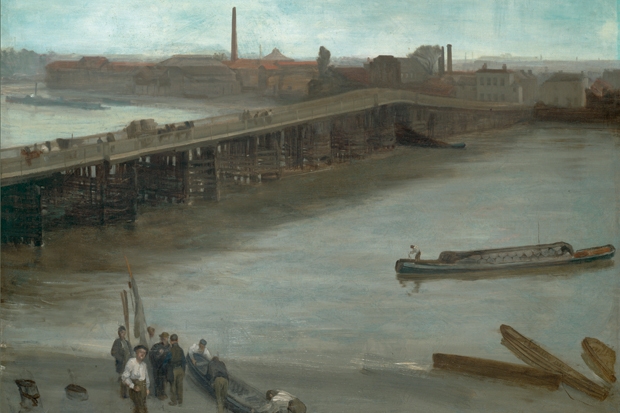The famous court case in which Ruskin accused Whistler of ‘flinging a pot of paint in the public’s face’ continues to rumble through the public response to art in this country. The man in the street, the man on the Clapham Omnibus and most of the men who drive black cabs all like their art to be recognisable. (Perhaps women are less hidebound.) Their definition of skill is the ability to paint with photographic fidelity, and they prefer art to tell a story. James Abbott McNeill Whistler (1834–1903), leading exponent of ‘art for art’s sake’, painted pure visual poetry rather than the hard facts of detailed realism. His paintings are supremely atmospheric: subtle and allusive, they suggest rather than state, evoke rather than describe. However, this does not mean that he couldn’t draw. In this new exhibition there is ample demonstration of his graphic abilities — perhaps indeed too much.
Many of the visitors to Dulwich will be drawn by the subject of this exhibition, expecting an interesting historical overview of London with lots of Thames scenes. And, to a certain extent, this is what they get. My first impression was of a few intensely beautiful things surrounded by a plethora of less consequential images. There are a lot of prints in this show, and rather too many period photographs. It often irks me that gallery-goers spend more time reading the wall texts than looking at the pictures, but here they were clustered round the photos and the maps rather than the art. London and its river are evidently of more interest than the genius of an expatriate American painter…
The exhibition begins with the ‘Thames set’, a sequence of 16 etchings of river subjects published in 1871.








Comments
Join the debate for just £1 a month
Be part of the conversation with other Spectator readers by getting your first three months for £3.
UNLOCK ACCESS Just £1 a monthAlready a subscriber? Log in